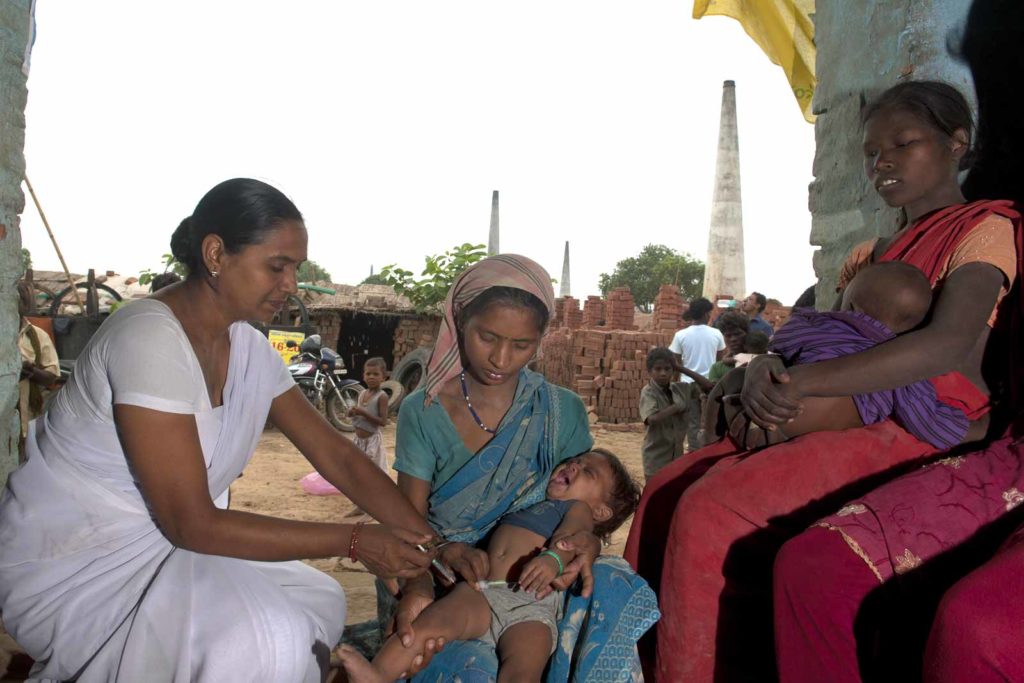The years 2010 to 2020 have been declared by the world leaders as the ‘decade of vaccines’ to ensure discovery, development, and delivery of lifesaving vaccines globally, especially to the poorest countries. It has long been recognised that vaccines have tremendous potential to improve the quality of life in developing countries and have been successful in reducing the incidence of infectious diseases. They are also cost effective and have indirect economic advantages in decreasing the costs of treatment and increasing productivity at work.
This is especially true for a country like India where the public health system is poor, private healthcare unaffordable for the vast majority of poor (often forming a major out of pocket expense) and diagnostics are late or non-existent resulting in high morbidity and mortality from otherwise curable or treatable conditions. However, until 2011, India did not have a well-defined vaccines policy. The policy now attempts a systematic approach to immunisation, new vaccines introduction, and also other concerns like vaccine procurement, financing, research in vaccines and import and export of vaccines.
Presently, India has a National Immunisation Programme, under which falls the Universal Immunization Programme (UIP). UIP covers primary vaccines: Bacillus Calmette-Guérin (BCG), a vaccine for tuberculosis; DPT, also called the trivalent vaccine, for diphtheria, pertussis (whooping cough) and tetanus; OPV a vaccine against polio; Hepatitis B (introduced in 2002 and universalised in 2011); Japanese Encephalitis in endemic districts; Measles and the Pentavalent vaccine for children younger than 6 week (Hib-Hep B- DPT).
The state spends considerable time and resources in getting the vaccines to every child, however, the situation remains dismal. According to the latest NFHS-4 survey, 62 percent of children age 12-23 months had received all basic vaccinations at any time before the survey, and 54 percent received all basic vaccinations by age of 12 months. Education and wealth seemed to be the most important factor in getting immunised. It was found that vaccination coverage increases with increasing mother’s schooling; 70 percent of children age 12-23 months whose mothers had 12 or more years of schooling had received all basic vaccinations compared with 52 percent of children whose mothers had no schooling. Vaccination coverage also increases with increasing wealth status; 70 percent of children age 12-23 months from households in the highest wealth quintile received all basic vaccinations compared with 53 percent of children from households in the lowest wealth quintile.
There were some regional differences as well; coverage of all basic vaccinations varies considerably by state and union territory. The coverage is highest in Puducherry, Punjab, Lakshadweep, and Goa (88-91%) and lowest in Nagaland (35%) and Arunachal Pradesh (38%).
Increasing vaccine coverage is beset with many logistical challenges, especially in geographically remote parts of the country, in inhospitable terrains. Maintaining cold chain is also important to ensure that the vaccine that reaches children is safe and effective. Vaccine delivery is moreover facing resistance from people due to misinformation and concerns regarding side effects. The health providers are also sometimes not equipped to deal with AEFI (adverse effects following immunisation) Thus new methods of communication and advocacy are required from the government to address people’s concerns along with better safety standards. This is essential since preventive medicine, like the immunisation programme, is delivered to an otherwise healthy population. Moreover, for a vaccine programme to be successful and for a disease to be eradicated or controlled universal compliance is required to attain the minimum coverage for herd immunity.
Vaccines are generally seen as a very cost effective measure to prevent disease, and in a low resource setting these can be truly very efficient. India is also fast becoming the leader in indigenously producing vaccines at lower costs. This is important since India is one of the largest cohorts of under-fives and vaccines generally mean an eternal financial commitment on the part of the government, unless the disease being targeted is for eradication like polio (it must be noted that OPV continues to form a part of UIP and is unlikely to be discontinued unless replaced by another injectable vaccine for polio – IPV).
Just as important it is to increase vaccination coverage it is vital to introduce newer vaccines that become available against diseases. India has in the last decade introduced vaccines for hepatitis B and Hib (meningitis and pneumonia). There are several new vaccines under consideration like the pneumococcal vaccine (for some strains for pneumonia), rotavirus vaccine (for diarrhoea), typhoid vaccine, dengue vaccine, and HPV vaccine for women (for cervical cancer). Out of these, the HPV vaccine is privately available in the Indian market, however, its introduction in the UIP has been put on hold following objections from the Swadeshi Jagran Manch, an affiliate of the Rashtriya Swayamsevak Sangh.
Introduction of new vaccines is a complex decision involving multiple stakeholders and a careful reading of evidence on disease burden and vaccine value characteristics (safety and efficacy). Vaccines and vaccine programmes remain subject to social, political, economic and operational challenges. Yet vaccines remain one of the most cost effective and efficacious public health measure and immunization programmes, for saving millions of lives, especially in a low resource setting, are a vital public good. Given that they are given to otherwise healthy population, the state must work towards increasing acceptability and information about the importance of vaccinations. They must actively encourage dialogue with multiple stakeholders including recipients to have an effective immunization programme.
Disclaimer: The opinions expressed in this article are the personal opinions of the author. The facts and opinions appearing in the article do not reflect the views of NEWSD and NEWSD does not assume any responsibility or liability for the same.


















